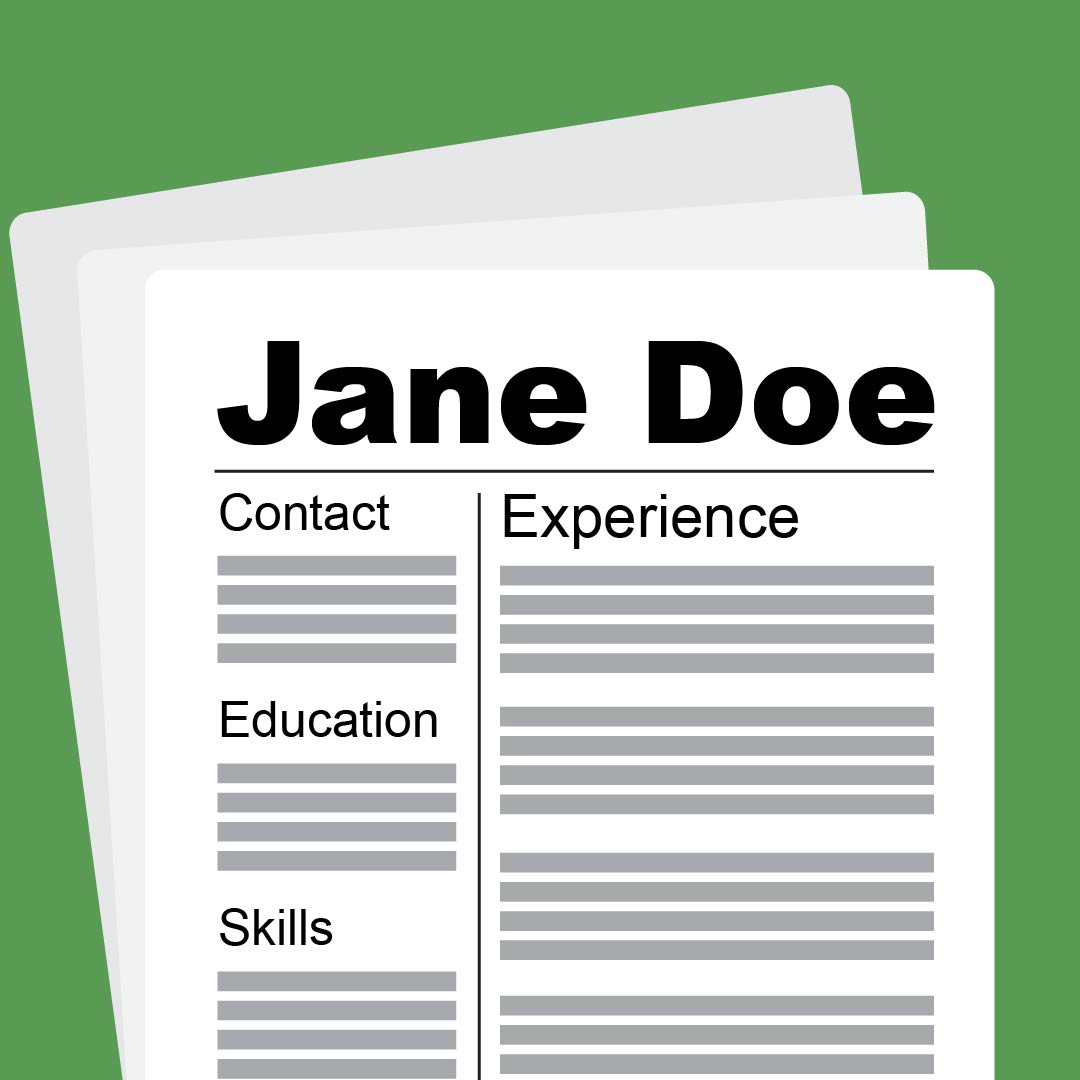Summary
In this lesson, students will learn how to design their own resumes and prepare for job interviews. They will begin by thinking about what they already know about resumes. Next, they will review examples of resumes before writing their own based on common descriptions of jobs for which students typically apply. Students will then practice interviewing skills with one another before summarizing their new knowledge.
Essential Question(s)
Why is it important to write a polished resume?
Snapshot
Engage
Students review what they already know about writing a resume.
Explore
Students analyze examples of resumes.
Explain
Students review common job postings to inform how they create a resume for future job and college applications.
Extend
Students role-play interviewing with one another.
Evaluate
Students summarize their new learning about how to create a resume and apply for a job.
Materials
Lesson Slides (attached)
All About Resumes handout (attached)
High-quality paper to print resumes (optional, at least one per student)
Resume Examples handout (attached)
Job Postings handout (attached)
Resume Information Tracking handout (attached)
Resume Template handout (attached)
Resume Action Verbs handout (attached)
Interview Skills and Questions Cards (attached)
Pencils or pens
Yellow and pink highlighters
Notebook paper
Student computers or tablets
Internet access
Engage
5 Minute(s)
Use the attached Lesson Slides to guide the lesson. Pass out the attached All About Resumes handout to each student. Display slide 3, and introduce students to the Tip of the Iceberg strategy. Ask students to write everything they know about creating a resume for job applications above the water line on the handout. After you have provided some time for students to think and write down their thoughts, have them compare what they have written down with an elbow partner. Ask for several volunteers to share what they know about resumes. Have students keep their handout to refer back to at the end of the lesson. Move through slides 4–5 to review the essential question and lesson objectives with students.
Explore
10 Minute(s)
Place students into groups of three to four. Give each group a set of the Resume Examples handout. Display slide 6, and have students critique each resume. Using the I Notice, I Wonder strategy, tell students to divide a sheet of notebook paper into two columns. Have your students title the left-hand column “I Notice” and the right-hand column “I Wonder.” Instruct them to write down something that stands out to them on the resumes in the left-hand column, and have them write a question they have about the resumes in the right-hand column.
After providing time for students to review the resumes, have a class discussion about the strengths and weaknesses of each resume. Ask students to share what they notice about the resumes, and encourage them to ask questions about what they see is included on the resumes.
Explain
60 Minute(s)
Pass out the attached Job Postings handout to each group. Move to slide 7, and introduce students to the Categorical Highlighting strategy. Have each group member read a specific job posting. Ask them to use a yellow highlighter to highlight the specific knowledge the employer is looking for and to use a pink highlighter to highlight the skills needed for the position. Then have each group share with one another what they have highlighted.
After students have reviewed the job postings, ask for each group to share something they have underlined. Have a class conversation about why it is important to know the specific items an employer wants.
Next, pass out the attached Resume Information Tracking handout to each student, and move to slide 8. Tell students to fill in the handout with all community service events, awards, leadership activities, jobs, extracurricular activities, and any honors received. Explain to students that as they begin to apply for jobs, it is common to not have anything listed in work experience. Adding school activities and responsibilities can offset the lack of work experience. The Resume Information Tracker can be kept by the student, and they can add to it throughout high school. This tracker is helpful when filling out college applications in the future.
Once students have listed everything they have been involved in, pass out the attached Resume Format Template handout and provide time for students to create their resume. Pass out the Resume Action Verbs handout for students to use while writing. If time allows, have students turn in a draft of their resume, and provide them with feedback. Afterward, have students use the feedback to write their final draft. Students can create their final draft in an online tool such as Canva.
Extend
10 Minute(s)
Display slide 9, and pass out the attached Interview Skills and Questions Cards to each student. Read over the common interview questions that students might encounter during an interview. Discuss with students the importance of being prepared for an interview. Have students pair up and practice interviewing one another using the Interview Skills and Questions cards based on one of the job postings that was previously reviewed. After each pair of students have taken turns interviewing and asking questions to each other, have a class discussion about what was challenging when being interviewed. Reinforce the idea that by practicing before an interview, students will be more relaxed and ready for the interview process
Evaluate
5 Minute(s)
Transition to slide 10, and have students refer back to their All About Resumes handout from the beginning of the lesson. Provide time for students to add what they have learned about writing a resume and interviewing for jobs under the water line on their handout. Have students add any lingering questions they have about resumes, and collect the handouts to review student understanding.
Resources
K20 Center. (n.d.). Canva. Tech tools. https://learn.k20center.ou.edu/tech-tool/612
K20 Center. (n.d.). Categorical highlighting. Strategies. https://learn.k20center.ou.edu/strategy/192
K20 Center. (n.d.). I notice, I wonder. Strategies. https://learn.k20center.ou.edu/strategy/180
K20 Center. (n.d.). Tip of the iceberg. Strategies. https://learn.k20center.ou.edu/strategy/67




